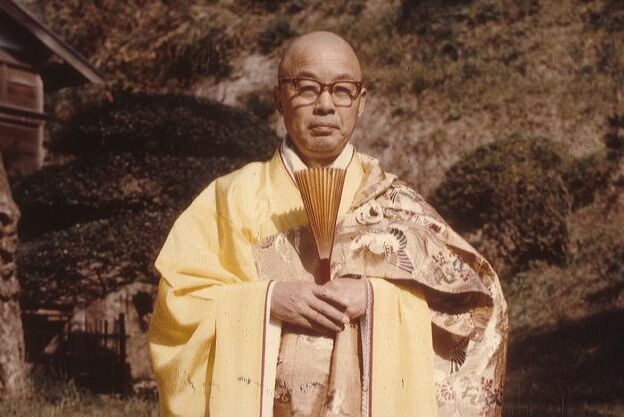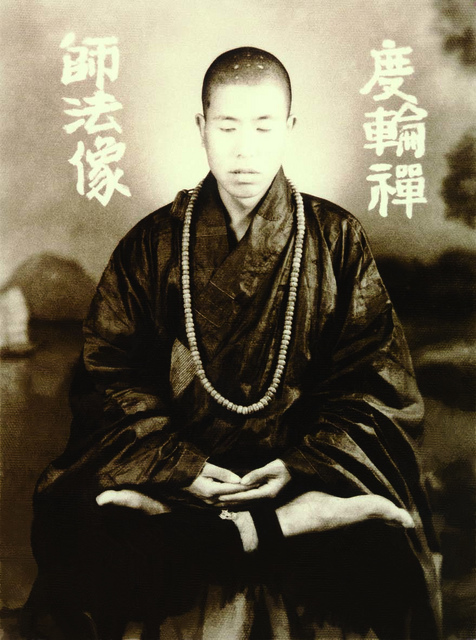|
Hazy Moon Zen Center
The Hazy Moon Zen Center is a Soto Zen center in Los Angeles, California. History Hazy Moon Zen Center was founded in 1996 by William Nyogen Yeo Roshi through the honorary founder Taizan Maezumi Roshi. Nyogen Roshi practiced 27 years with Maezumi Roshi and was the last of the successors in the Maezumi Roshi Lineage. As an active Zen temple, the Hazy Moon offers daily zazen practice that allows the public to practice with the temple monks, and Dharma talks are given by Nyogen Roshi on a weekly basis. As with most Zen temples, intensive retreats (''sesshin'') and regular classes that aid practitioners in strengthening their Zen practice are offered throughout the year. See also *Timeline of Zen Buddhism in the United States Below is a timeline of important events regarding Zen Buddhism in the United States. Dates with "?" are approximate. Events Early history * 1893: Soyen Shaku comes to the United States to lecture at the World Parliament of Religions held in ... Refere ... [...More Info...] [...Related Items...] OR: [Wikipedia] [Google] [Baidu] |
Soto Zen
Soto may refer to: Geography * Soto (Aller), parish in Asturias, Spain * Soto (Las Regueras), parish in Asturias, Spain * Soto, Curaçao, Netherlands Antilles * Soto, Russia, a rural locality (a ''selo'') in Megino-Kangalassky District of the Sakha Republic, Russia * Soto de Cerrato, municipality in Palencia Province, Spain * Soto de la Vega, municipality in León Province, Spain * Soto de los Infantes, parish in Asturias, Spain * Soto de Luiña, parish in Asturias, Spain * Soto del Barco (parish), parish in Asturias, Spain * Soto del Real, municipality in Madrid Province, Spain * Soto en Cameros, municipality in La Rioja, Spain * Soto la Marina, Tamaulipas, municipality in Mexico * Soto Street, in Los Angeles, California ** Soto (Los Angeles Metro station), located on Soto Street at the intersection with First St. * Soto y Amío, municipality in León Province, Spain Groups of people * So'to, indigenous people of the Amazon *Sōtō, the largest of the three traditional sects of Z ... [...More Info...] [...Related Items...] OR: [Wikipedia] [Google] [Baidu] |
Los Angeles, California
Los Angeles, often referred to by its initials L.A., is the List of municipalities in California, most populous city in the U.S. state of California, and the commercial, Financial District, Los Angeles, financial, and Culture of Los Angeles, cultural center of Southern California. With an estimated 3,878,704 residents within the city limits , it is the List of United States cities by population, second-most populous in the United States, behind only New York City. Los Angeles has an Ethnic groups in Los Angeles, ethnically and culturally diverse population, and is the principal city of a Metropolitan statistical areas, metropolitan area of 12.9 million people (2024). Greater Los Angeles, a combined statistical area that includes the Los Angeles and Riverside–San Bernardino metropolitan areas, is a sprawling metropolis of over 18.5 million residents. The majority of the city proper lies in Los Angeles Basin, a basin in Southern California adjacent to the Pacific Ocean in the ... [...More Info...] [...Related Items...] OR: [Wikipedia] [Google] [Baidu] |
William Nyogen Yeo
William Nyogen Yeo was the spiritual director of Hazy Moon Zen Center in Los Angeles, California, one of the twelve Dharma Successors of the late Taizan Maezumi. He was a member of the American Zen Teachers Association. See also *Timeline of Zen Buddhism in the United States Below is a timeline of important events regarding Zen Buddhism in the United States. Dates with "?" are approximate. Events Early history * 1893: Soyen Shaku comes to the United States to lecture at the World Parliament of Religions held in ... References Rinzai Buddhists Soto Zen Buddhists Zen Buddhist spiritual teachers American Zen Buddhists 1936 births 2024 deaths {{US-reli-bio-stub ... [...More Info...] [...Related Items...] OR: [Wikipedia] [Google] [Baidu] |
Taizan Maezumi
Hakuyū Taizan Maezumi ( Maezumi Hakuyū, February 24, 1931 – May 15, 1995) was a Japanese people, Japanese Sōtō Zen, Zen Buddhist priest who substantially contributed to development of Zen in the United States. In 1956 he was sent to the United States to serve as a priest for a Japanese-American congregation in Los Angeles. After taking English classes, Maezumi began holding zazen for Western students early in the 1960s, founding the Zen Center of Los Angeles in 1967. After studying koans with Hakuun Yasutani and lay-teacher Koryū Osaka, in his teachings and practice Maezumi combined Sōtō-style ''shikantaza'' with Harada Daiun Sogaku's ''kōan''-curriculum, which uses both Rinzai and Soto ''kōan''-collections. In 1979 Maezumi and his first dharma-heir Bernie Glassman informally conceived the White Plum Asanga, a "community of peers" of dharma-heirs of Maezumi and their successors, "represent[ing] the vision of Maezumi Roshi." Maezumi publicly admitted he was an alcoholic ... [...More Info...] [...Related Items...] OR: [Wikipedia] [Google] [Baidu] |
Zazen
''Zazen'' is a meditative discipline that is typically the primary practice of the Zen Buddhist tradition. The generalized Japanese term for meditation is 瞑想 (''meisō''); however, ''zazen'' has been used informally to include all forms of seated Buddhist meditation. The term ''zuòchán'' can be found in early Chinese Buddhist sources, such as the Dhyāna sutras. For example, the famous translator Kumārajīva (344–413) translated a work termed ''Zuòchán sān mēi jīng'' (''A'' ''Manual on the Samādhi of Sitting Meditation'') and the Chinese Tiantai master Zhiyi (538–597 CE) wrote some very influential works on sitting meditation. The meaning and method of zazen varies from school to school, but in general it is a quiet type of Buddhist meditation done in a sitting posture like the lotus position. The practice can be done with various methods, such as following the breath (anapanasati), mentally repeating a phrase (which could be a koan, a mantra, a huato ... [...More Info...] [...Related Items...] OR: [Wikipedia] [Google] [Baidu] |
Sesshin
A ''sesshin'' (接心, or also 摂心/攝心 literally "touching the heart-mind") is a period of intensive meditation (zazen) retreat in a Japanese Zen monastery, or in a Zen monastery or Zen center that belongs to one of the Japanese Zen traditions outside of Japan. While the daily routine in the monastery requires the monks to meditate several hours a day, during a sesshin they devote themselves almost exclusively to zazen practice. The numerous 30- to 50-minute-long meditation periods are interleaved with short rest breaks, meals, and sometimes short periods of work (Japanese: 作務 ''samu'') all performed with the same mindfulness; nightly sleep is kept to a minimum, at six hours or fewer. During the sesshin period, the meditation practice is occasionally interrupted by the master giving public talks ( teisho) and individual direction in private meetings (which may be called '' dokusan'', ''daisan'', or ''sanzen'') with a Zen Master. In modern Buddhist practice in Japa ... [...More Info...] [...Related Items...] OR: [Wikipedia] [Google] [Baidu] |
Timeline Of Zen Buddhism In The United States
Below is a timeline of important events regarding Zen Buddhism in the United States. Dates with "?" are approximate. Events Early history * 1893: Soyen Shaku comes to the United States to lecture at the World Parliament of Religions held in Chicago * On November 18, 1903, Rev. Sokyo Ueoka, head minister of Tokujuan Soto Zen Temple in Honichi, Nuta Higashi Village. Toyota—gun (present day Mihara City), Hiroshima Prefecture. received an assignment to become a visiting minister to Japanese immigrants in Hawaii. Arriving in Honolulu on July 9, 1904 he built a temporary temple in the Aiea plantation. Upon the request of Japanese residents on Maui, he moved to Lower Paia on November 7, 1906 with his wife, Tomiyo, who joined him from Japan. Through the initiative of Sukesaburo Yamazaki, Kikujiro Soga, and Unosuke Ogawa, he leased a half-acre of land for 15 years from local Hawaiians. This site was adjacent to the present Paia Fire Station and behind the former County Courthouse. ... [...More Info...] [...Related Items...] OR: [Wikipedia] [Google] [Baidu] |
Buddhist Temples In Los Angeles
Buddhism, also known as Buddhadharma and Dharmavinaya, is an Indian religion and List of philosophies, philosophical tradition based on Pre-sectarian Buddhism, teachings attributed to the Buddha, a wandering teacher who lived in the 6th or 5th century Before the Common Era, BCE. It is the Major religious groups, world's fourth-largest religion, with about 500 million followers, known as Buddhists, who comprise four percent of the global population. It arose in the eastern Gangetic plain as a movement in the 5th century BCE, and gradually spread throughout much of Asia. Buddhism has subsequently played a major role in Asian culture and spirituality, eventually spreading to Western world, the West in the 20th century. According to tradition, the Buddha instructed his followers in a path of bhavana, development which leads to Enlightenment in Buddhism, awakening and moksha, full liberation from ''Duḥkha, dukkha'' (). He regarded this path as a Middle Way between extremes su ... [...More Info...] [...Related Items...] OR: [Wikipedia] [Google] [Baidu] |
Zen Centers In California
Zen (; from Chinese: ''Chán''; in Korean: ''Sŏn'', and Vietnamese: ''Thiền'') is a Mahayana Buddhist tradition that developed in China during the Tang dynasty by blending Indian Mahayana Buddhism, particularly Yogacara and Madhyamaka philosophies, with Chinese Taoist thought, especially Xuanxue, Neo-Daoist. Zen originated as the Chan Buddhism, Chan School (禪宗, ''chánzōng'', 'meditation school') or the Buddha-nature, Buddha-mind school (佛心宗'', fóxīnzōng''), and later developed into various sub-schools and branches. Chan is traditionally believed to have been brought to China by the semi-legendary figure Bodhidharma, an Indian (or Central Asian) monk who is said to have introduced dhyana teachings to China. From China, Chán spread south to Vietnam and became Thiền, Vietnamese Thiền, northeast to Korea to become Korean Seon, Seon Buddhism, and east to Japan, becoming Japanese Zen. Zen emphasizes Buddhist meditation, meditation practice, direct insight int ... [...More Info...] [...Related Items...] OR: [Wikipedia] [Google] [Baidu] |





